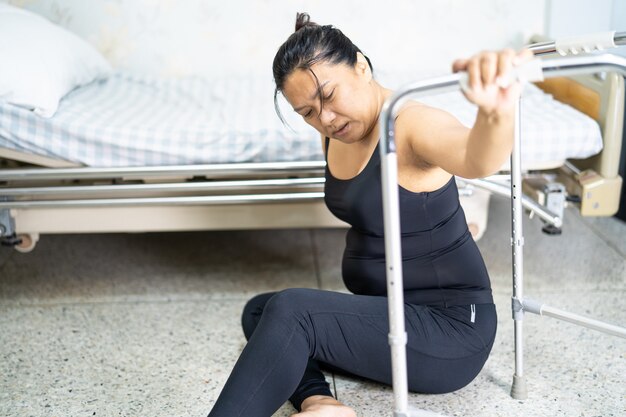Can Rebounding Help With Osteoporosis? Here's What You Need to Know
Osteoporosis, a condition characterized by weak and brittle bones, poses a significant risk to millions worldwide, especially as they age. This raises the perennial question: is rebounding—the act of jumping on a mini-trampoline—beneficial for those with osteoporosis?
The Science Behind Rebounding
Rebounding is more than just child’s play; it’s a low-impact form of exercise that has gained traction for its potential health benefits, particularly for bone health. When you jump on a trampoline, the gravitational forces work on your body in unique ways. This weight-bearing exercise stimulates the bones, potentially helping increase or maintain bone density, which is crucial for osteoporosis management.
Benefits of Rebounding for Osteoporosis
One of the most appealing aspects of rebounding is its low impact nature. Unlike running or jumping on hard surfaces, rebounding gently cushions each bounce, reducing the stress on joints and minimizing injury risks. Here’s why it might be good for osteoporosis:
- Bone Stimulation: The gentle bounce exerts positive stress on the bones, which can enhance bone density over time.
- Improves Balance and Coordination: Regular rebounding can boost proprioception, reducing the risk of falls—a major concern for those with osteoporosis.
- Enhanced Circulation: Bouncing improves blood flow, which can aid in overall bone and joint health.
- Increased Muscle Strength: It helps in strengthening surrounding muscles, which provide added support and protection to the bones.
Things to Consider
Before jumping in, it’s crucial to discuss with a healthcare provider to ensure that rebounding is safe for you, especially if you already have fragile bones or other medical conditions. Supervised sessions or starting with gentle routines can mitigate risks.
Exploring Financial Assistance for Osteoporosis Management
Treating and managing osteoporosis can be financially taxing. Fortunately, there are numerous programs and options for those needing assistance.
Potential Avenues for Support
Government Aid Programs: Many governments offer healthcare programs that cover the cost of osteoporosis medication and treatments. Checking eligibility and applying early can ease the burden significantly.
Educational Grants and Scholarships: For those studying, scholarships and grants are available that might cover healthcare-related expenses for students dealing with osteoporosis. Institutions sometimes offer additional support for students with medical conditions.
Insurance Coverage: Private health insurance may cover bone density tests, medication, and other treatments. It's wise to review your policy details or consult your provider to understand what's included.
Debt Relief Options: If osteoporosis-related expenses have resulted in financial strain, seeking professional advice on debt management or relief options could provide a lifeline.
Credit Solutions: Special credit solutions or lines of credit with low-interest rates might be available for medical expenses. Ensure to explore these, but also tread carefully to avoid overburdening yourself with debt.
Summary of Financial Support Options
- 🏛 Government Health Programs: Check eligibility for coverage on medications and treatments.
- 🎓 Educational Grants: Explore scholarship opportunities through educational institutions.
- 🏥 Insurance Review: Dig into your health policy for osteoporosis-related benefits.
- 💳 Credit Solutions: Seek out medical credit solutions but remain cautious of interest rates.
- 💬 Debt Counseling: Professional advice can help manage or alleviate financial stress.
While rebounding offers a unique way to improve or maintain bone health, the challenges of osteoporosis are not only physical but financial. By exploring various support options, patients can better manage both their health and financial well-being.

Related Topics
- a Nurse Is Caring For a Client Who Has Osteoporosis.
- a Percutaneous Is Performed To Treat Osteoporosis Related Compression Fractures
- Can Alcohol Cause Osteoporosis
- Can I Do Pilates If I Have Osteoporosis
- Can I Reverse Osteoporosis
- Can Men Get Osteoporosis
- Can Osteoporosis Affect Teeth
- Can Osteoporosis Be Cured
- Can Osteoporosis Be Painful
- Can Osteoporosis Be Reversed